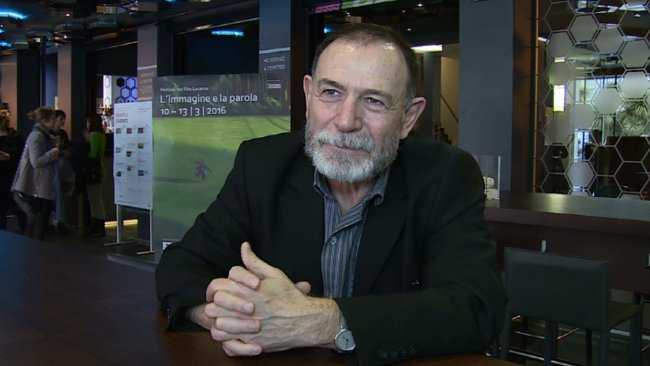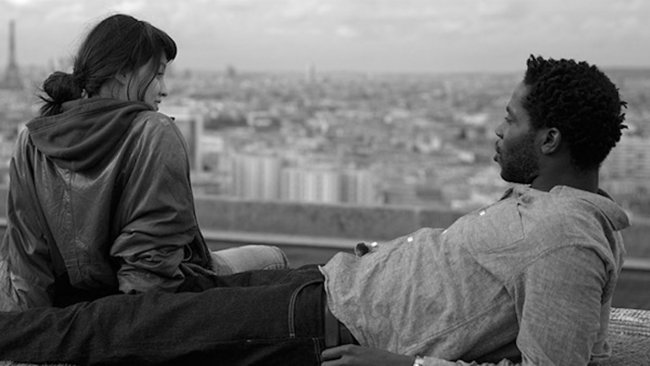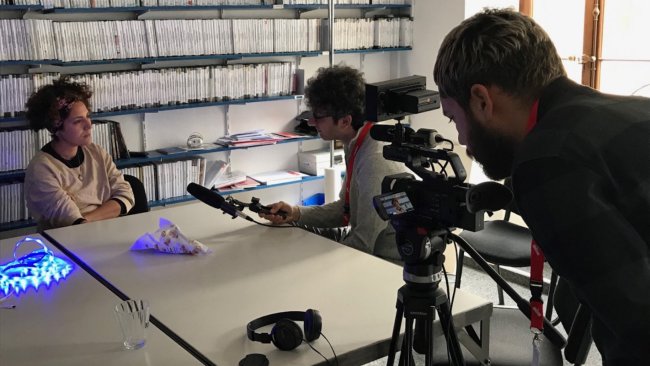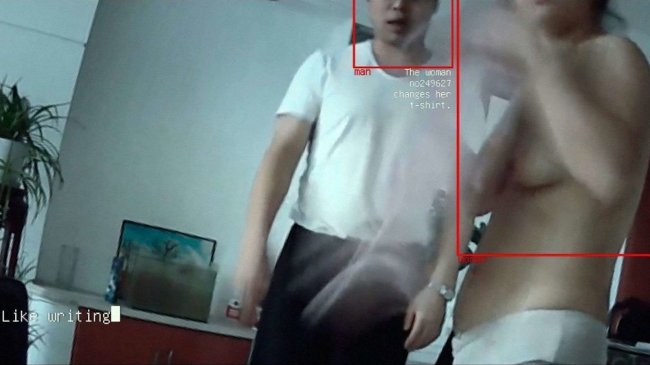The United States of America | James Benning
[…] In this America that is both somewhere and everywhere, geographic places are represented by other (“false”) geographic places. What we think is unique is elsewhere, under the same sky.
[…] This beautiful and revolutionary decision of creating reality with reality itself, brought by Pasolini to cinema based on literary works, can be associated with James Benning´s «The United States of America».
[…] «It takes time to understand time, and one has to understand time to understand place».
[…] «It’s not about the good old days, it’s about the bad old days happening over and over».
Text: Jorge Yglesias
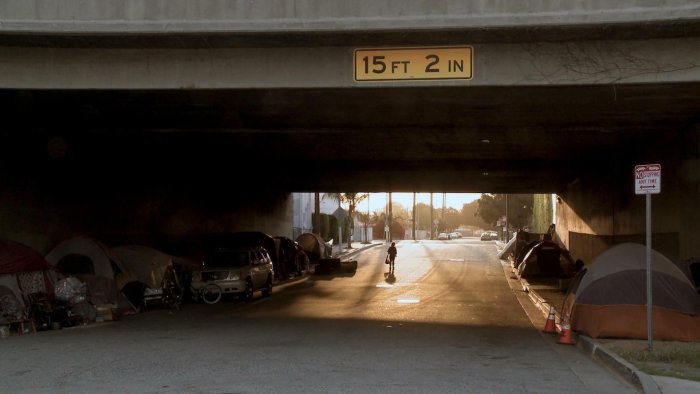
REVIEW and INTERVIEW with James Benning
The United States of America, one of the six films composed by James Benning during the two years of confinement due to COVID-19, is a lucid essay on representation and concepts of reality. The work consists of 52 fixed shots of 100 seconds, each one corresponding to one of the 50 states of the nation, plus the federal capital (the District of Columbia, Washington) and Puerto Rico (officially “the Commonwealth of Puerto Rico”). The order is alphabetical, according to the name of each region.
These 52 pieces of experience woven from irony and pain, subtlety and compassion, concern and intensity do not attempt to typify every state, avoiding enclosing them in a cliché. Here, a place could be any place, and also “the” place. Cleveland, Ohio, is depicted by clouds; Paris, Tennessee, by an early moon gradually covered by drifting clouds; Meadow Bridge, Virginia, by an automobile race seen from an angle that only includes a curve of the track, a funny Wheel of Fortune; Wilmington, California, by a freeway underpass crossed by a woman wearing a yellow blouse; Grand Junction, Colorado, by a fan-shaped tree at the right side of the frame and two people going back and forth at the left; New Milford, Connecticut, by an American flag fluttering against a cloudy sky; Minnier, Illinois, by two rectangles à la Rothko that creates two zones (earth/sky); Stemple Pass, Montana, by a mesmerizing view of snow gently falling.
When a note at the end says that the whole movie was recorded in California, forcing us to rearrange our impressions and ideas, Benning's discourse becomes more meaningful. Taking advantage of his knowledge of a state where he has lived for decades and the help of Google Street View, he has created a USA that shows the relativeness of “real” places, and reaches a provocative truth through fakery. In this America that is both somewhere and everywhere, geographic places are represented by other (“false”) geographic places. What we think is unique is elsewhere, under the same sky.
This film that dialogues with a previous one, USA, made in 1975 by Benning and Bette Gordon, and in 25 minutes reveals America from inside a car through a windscreen, can be associated with the method used by Edgar Allan Poe to write The Raven as he exposed in his Philosophy of Composition: «It is my design to render it manifest that no one point in its composition is referable either to accident or intuition – that the work proceeded step by step, to its completion, with the precision and rigid consequence of a mathematical problem». Also, with Pasolini's strategy for “translating” The Gospel According to St. Matthew: «The whole film was shot in southern Italy. I had already decided to do that even before I went to Palestine, where I went just to ease my conscience. I knew I would remake the Gospel by analogy. Southern Italy gave me a way to make the transposition from the ancient world to the modern without the need to reconstruct it archaeologically or philologically. [...] The simple fact that I made the film by analogy means that I was not interested in accuracy. » This beautiful and revolutionary decision of creating reality with reality itself, brought by Pasolini to cinema based on literary works, can be associated with James Benning´s The United States of America. Seeing it, the idea of a society constituted of men and women finds little substance. Sometimes we see human beings, but tangentially. Urban spaces are alien emblems of progress, emptied of the human element. In contrast, the images of nature speak of areas still resistant to material and spiritual depredation.
Voices from the past incarnating Politics and History permeate some images, as a premonitory speech on the military by Eisenhower or the reading of the Book of Revelations by Gregory Peck. Echoes, evocations, remembrances, ghostly complaints wandering the landscapes… Stokely Carmichael's words on black community self-defense vibrate upon a cotton field (Fayette, Mississippi) as those of American Indian activist John Trudell on native struggle (Hanksville, Utah). Some lines from Woody Guthrie's This Land is Your Land disapproving private property and “No Trespass” warnings anticipate the final shot of a barbed wire entrance while remote gunfire is heard. In Alicia Keys' voice Imagine is more distant, more old-fashioned and cornier than ever.
The impressing landscapes that appear in this and other films of Benning don't suggest “sublime” ideas. It seems more likely that the experience we live with them can be repeated, more or less, if we go to those places at other times, that there is something that transcends the “here and now”. If Frederick Wiseman is the chronicler of indoors America, James Benning is the privileged viewer and harvester of outdoors´ USA.
*
Interview with James Benning
Jorge Yglesias (JY): If it was impossible to you to make a 52 shots film, each of them recorded in a different state of the nation, why make it the way you did? What was the concept that animated this decision?
James Benning (JB): Of course, it was possible to travel to all 52 locations throughout the US, including Puerto Rico and Washington DC, but given COVID and the cost involved, perhaps it was outside of my own means. Nevertheless, it began with the idea of the impossibility of truly defining what the United States of America represents. So, I was immediately interested in constructing a metaphor for my America, that is, what feelings I had for and about it. Shooting only in California was a way to emphasize my (or anybody’s) limited point of view. We can see only from our own perspective. Personal meaning is always derived from this limitation.
JY: What appeals to you in the landscapes you shot?
JB: Many of the places I have filmed for USA [1975] and in earlier films were chosen because of my familiarity and affinity for that specific place, or they are places I stumbled upon that drew attention to my eye and/or ear. Any place always exists in time and is connected to specific events. It is that connection together with its uniqueness of look and/or sound that interests me.
JY: Why do you like to go back to places you shot years ago?
JB: I often return to places I have filmed to see how they might have changed. Any place changes both throughout the day and from year to year. This, of course, is a function of the way our planet revolves around the sun and also the social and political systems controlling and affecting place, systems that are in constant flux.
JY: Are you trying to “avoid” montage by giving the same duration to each shot? Do you think classical montage leaves little space to “see” and experience time?
JB: Choosing equal duration has to do with being democratic (fair), allowing equal time for each, and of course, a cut affects both shots, creating new meaning… Kuleshov taught (or warned) us about that, but more importantly, it takes time to understand time, and one has to understand time to understand place. I have said many times that place is a function of time. For instance, it’s hard to tell how fast the grass is growing in a still photograph. And I suppose, once a shot gets to be considered long, montage renders itself useless.
JY: In The United States of America “archival” voices (speeches, interviews, songs) provoke a painful confrontation with the present. Nostalgia for the past they embody, for that which could not be?
JB: «I feel nostalgia is a form of death» – I think Bob Dylan said that, but of course with Dylan one never knows what he really thinks. I’m evoking the past in The United States of America to point out that our problems are still with us. It’s not about the good old days, it’s about the bad old days happening over and over, but this 2021 version of USA was inspired by the 1975 version I made with Bette Gordon, and in that film we used current songs and voices from the radio. This new 2021 version is inspired by those earlier inclusions.
JY: In this and in other films of yours, the out-of-field seems especially disturbing, an anticipatory fear that something will burst in and damage the tranquility that takes place in the film. I wonder if it is an unconscious commitment that we feel with the pureness of the moment you share with us. I’m thinking about the shot of the horses…
JB: Any shot always has off-screen space and, in turn, off-screen space always suggests the unknown. With duration, this unknown becomes a bit more mysterious, and I suppose could induce a loss of tranquility, but in the shot of the horses it’s not the off-screen that causes fear, rather it’s the horses acting differently than expected. Horses aren’t thought of as standing so still for such a long duration, so it’s this uncommon behavior that damages the expected tranquility, which is rather ironic, that the horses are overly tranquil making the viewer feel uneasy.
JY: You have made 6 films during the pandemic, is there a connection between them? What do they represent in your work as a whole?
JB: There is a connection. I suppose it was the two years of imposed isolation. The first film was From Bakersfield to Mojave. I made this after spending a month locked away in my house. I made it to get outside, but away from people. It was shot in the middle of nowhere along the railroad tracks connecting those two towns. The second film was on Paradise Road, shot inside my house in Val Verde. The third was PLACE, shot on a road trip from California to Utah to Missouri to Chicago to Montgomery to Texas and back. I couldn’t take being locked up. Then The United States of America, Ten Years Later, and ALLENSWORTH, all shot it California, all under very un-stressful conditions.
This article contains a third-party video. If you would like to watch the video, please adjust your settings.
Watch
Screenings in June 2022 at the Neues Kino Basel
Info
The United States of America | Film | James Benning | USA 2022 | 98’
First published: June 14, 2022
